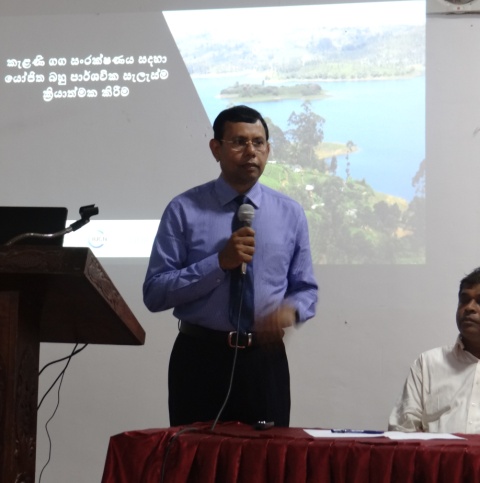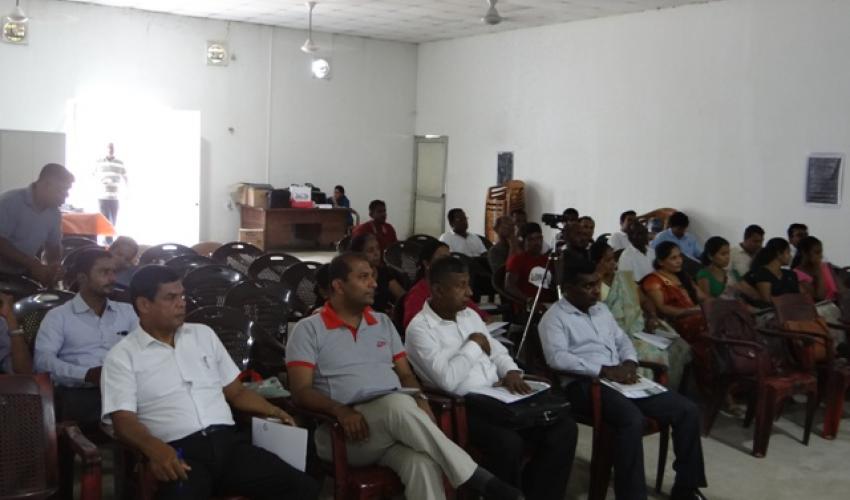Mobilizing Public-Private-Community partnerships to save Kelani River: Wattala Division
As part of the operationalizing of the Kelani River Multi-Stakeholder Partnership Approach), IUCN partnered with Brandix Limited (www.brandix.lk) to promote Public-Private-Community Partnerships (PPCPs) to conserve the Kelani River Basin. The second Divisional level event was conducted at the Wattala Divisional Secretariat on 22 September 2017.

Dr Mallawantri addressing the gathering
Photo: ©IUCN\Krihsani Peiris
The event was graced by Ms P.D.T.C. Rajika, the Divisional Secretary of Wattala along with nearly 50 Government and Non-Government volunteers and several private sector companies operating in the Divisional Secretary area. Key private sector participated are Toyota Lanka, Cliftex Industries, Richill Chemicals, Pegasus Reef Hotels and Finn Pack. The workshop was facilitated by Mr Jinasiri Dadallage, former Secretary, Ministry of Public Administration and Dr Ananda Mallawatantri, Country Representative of IUCN.
Dr Mallawatantri elaborated on the importance of preserving the Kelani River Basin for the current and the future generations and the need for a Multi-Agency and Multi-Stakeholder approach to ensure that everyone understand the importance and work together to manage and conserve the Kelani River Basin, that provide drinking water to over 5 million people and also provide large number of jobs, through more than 10,000 enterprises. He further described the significance of PPCPs in safeguarding the Kelani River to work at the grass-root level. In the PPCP approach, the GN and village level Govt. staff, NGOs and volunteers come together to form a response group to minimize pollution loadings to Kelani River. In this context, the water quality report cards, generated by measuring the water quality status, considering the suitability for drinking, swimming and aquatic species can be used as the starting point, Dr Mallawatantri, emphasized. There are a range of interventions that can be done at the village level, such as better solid waste and waste water management; planting trees and growing green cover, stream bank preservation.
 Photo: ©IUCN\Krihsani Peiris
Photo: ©IUCN\Krihsani Peiris
In his guidance, Mr Dadallage explained how the village level planning can be strengthened using a simplified socioeconomic survey tool to create baseline indicators. The baselines generated will enable the village level groups to plan the interventions, implement and monitor. Village level interventions are at the Grama Niladhari Division (GND) level for coordination purposes. The participants were given instructions/guidance along with google maps to identify the requested data comprising households, agriculture, services, environment, health and livelihoods. The event also served as a platform for the participants, especially for those in the private sector, to bring out and voice pressing issues that hinders them in preserving their surrounding environment.
The KRMP designed PPCP approach is being implemented in nine DS divisions as a pilot, funded by Brandix Lanka and implemented by IUCN Sri Lanka.
